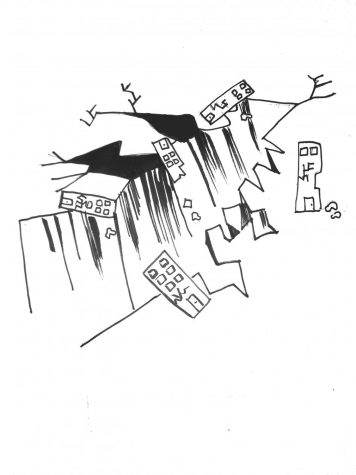Oct. 17, 1989. It was a day that fell at the end of one of the Bay Area’s most prosperous decades. The technology industry in San Francisco had created a massive boom in job opportunities, Oakland was in the midst of developing a thriving pop culture, the regions of Silicon Valley were gradually transforming into the innovative powerhouses known today, and an influx of immigrants had been shaping the Bay Area’s identity. Sportswise, the San Francisco Giants and Oakland Athletics enjoyed standout seasons, with both teams being pitted against each other in the World Series. At 5 p.m. on the evening of Oct. 17th, many San Franciscans, Oaklanders and several other Bay Area residents tuned in for the third game of the fall classic.
Approximately five minutes later, the residents were still tuned in to their televisions and radios, however, it was for a drastically different reason: The 1989 Loma Prieta earthquake had shaken the Bay Area. Within 15 seconds of the primary wave, the Bay Bridge and Cypress Freeway had caved in and collapsed. Downtown Santa Rosa had been essentially destroyed, 63 people had lost their lives, with around 3,000 others sustaining severe injuries.
According to the United States Geological Survey (USGS), the 1989 Loma Prieta earthquake cost $6 billion in damages, making it one of the most expensive natural disasters in American history. Since then, the USGS has claimed that another Bay Area earthquake with a Richter magnitude of 6.7 or higher, is inevitable. Yet, in spite of these forewarnings, the Bay Area is not prepared to sustain a major earthquake without being plummeted into crisis.
Earthquakes are inevitable, and it is important for all of us living and governing in the Bay Area to properly mitigate the impacts. There are seven major faults transcending the Bay Area, and according to the USGS, around 25 percent of the general Bay Area lies in areas of saturated soil (Liquefaction) with various levels of susceptibility. With this in mind, one would think that updating the city’s high-rise buildings would be a priority for the local government. Unfortunately, another USGS report found that 39 of San Francisco’s high-rises are at risk of collapse during a major earthquake due to their possession of welded-steel moment-frames. The flaw in this technique was detected after the 1994 Northridge Earthquake by both the USGS and engineers at the California Institute of Technology (CALTECH) after 60 buildings using this technique showed signs of fracturing. While building codes were rewritten subsequent to Northridge, the aforementioned high-rises in San Francisco were constructed before the new building code, and are still at risk of collapse.
There are several more concerns regarding the Bay Area’s preparedness for a large scale earthquake. In San Francisco, the Loma Prieta Earthquake demonstrated the susceptibility of wood-framed “soft-story” apartment buildings that were plentiful in the city’s residential areas. These buildings contain multiple stories, including a first story parking garage. These first stories would buckle during an earthquake, causing the entire structure to collapse. San Francisco along with Berkeley, Oakland, and other cities have issued mandates for owners of these buildings to make renovations (retrofits), cities like San Jose and Mountain View have not yet established a list of vulnerable structures. Even in the cities that have started granting permits, there still remain thousands of structures at risk, according to Kevin Stark of KQED Science.
Yet it seems as if the issue of building safety is frequently being pushed to the backburner.

In San Francisco, while engineers have attempted to address faulty high-rises, the issue has not been a top priority.
Keith Porter, who is an engineering expert for the American Society of Civil Engineers, has expressed concern regarding the apathy for this issue among engineers.“This is an issue that structural engineers should have been dealing with continuously since the mid-1990s and we just dropped it,” says Porter.
This lack of action by the Bay Area is summed up perfectly by policy advisor Arrieta Chakos in her claim that “The Bay Area has become rather complacent about how we stand as far as the risk.”
The key component for ensuring our safety is personal awareness. There are basic recommended steps to take by the Center for Disease Control and Prevention (CDC) that could drastically benefit one’s safety: The construction of a home first aid kit, complete with the medications, dressings, and other supplies, as well as an emergency kit containing essential tools, comfort items, and personal safety items are incredibly beneficial. The inspection of home hazards is also advised; glass items, heating units, refrigerators, and other appliances that could be considered a hazard.
Awareness of what to do in specific locations, such as high-rises, crowded public areas, and beaches will greatly enhance one’s chance of survival. With that being said, it is appropriate for Bay Area public, or private schools, Redwood included, to educate students on the personal steps one would need to take, rather than just addressing the threat with mandatory drills. Earthquakes remain a natural threat to all aspects of life in the Bay Area, and it is imperative that we do everything possible to limit the potential consequences when “the next big one,” inevitably hits.





